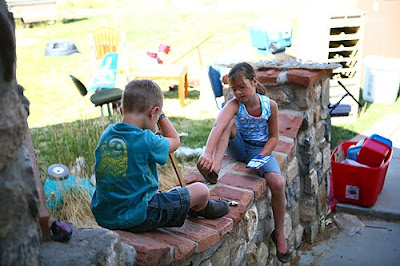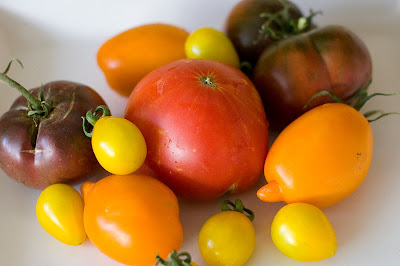 One of the things that I love about gardening is that it never ends. Even as fall approaches and we start seeing some of our plants dying we can still start preparing for next years harvest. Gardening teaches us about planning for the future, and not getting everything we want now. It shows us what our hard work, and natures gifts can bring. Gardening is a hobby of hope, building on the failures of past, anticipating the harvest of the future. Gardeners always look forward, not forgetting the past, but seeing the past as a stepping stone to future abundance.
One of the things that I love about gardening is that it never ends. Even as fall approaches and we start seeing some of our plants dying we can still start preparing for next years harvest. Gardening teaches us about planning for the future, and not getting everything we want now. It shows us what our hard work, and natures gifts can bring. Gardening is a hobby of hope, building on the failures of past, anticipating the harvest of the future. Gardeners always look forward, not forgetting the past, but seeing the past as a stepping stone to future abundance.Winter is on the horizon here in Utah but it is still a good time to prepare for next year. Start thinking about what you want to grow. I am excited for Marisa and I to get a property (which I think will happen soon) and the first thing I will plant this fall is garlic. I just ordered my garlic bulbs from the seed savers exchange.
You can plant garlic in the spring but if you want bigger better garlic, it is normally better to plant them in the fall. The best time is between September 15th to November 30th while the soil temperature is around 60 degrees F. Most of you still have some time before you buy your garlic seed bulbs and plant them but it is not a bad idea to prepare the soil now.
Garlic is pretty hardy, but you can improve your chance of success by preparing the soil and choosing the right spot to plant. Find an area in your garden that gets plenty of sun, with soil that is not too damp. Till your soil now, add some of the compost from your compost heap, and work it in. Most areas are still warm enough where the soil will have a chance to break down the compost even further, getting it ready to nourish your garlic as it springs to life next year.
Most places that provide garlic seed (which are just cloves of garlic prepared for planting) will provide you with instructions on how much room to give each clove and how deep to plant them. If you are interested in companion planting you can plant garlic next to beets, cabbage, and lettuce as it is said to improve the flavor of beets and it is a natural pesticide for aphids and other pests that threaten lettuce. Keep garlic away from potatoes, peas. and legumes.
We will post next year on when and how to harvest garlic. In the meantime start planning all of the wonderful meals you will eat with garlic to accentuate your fresh vegetables.



















































